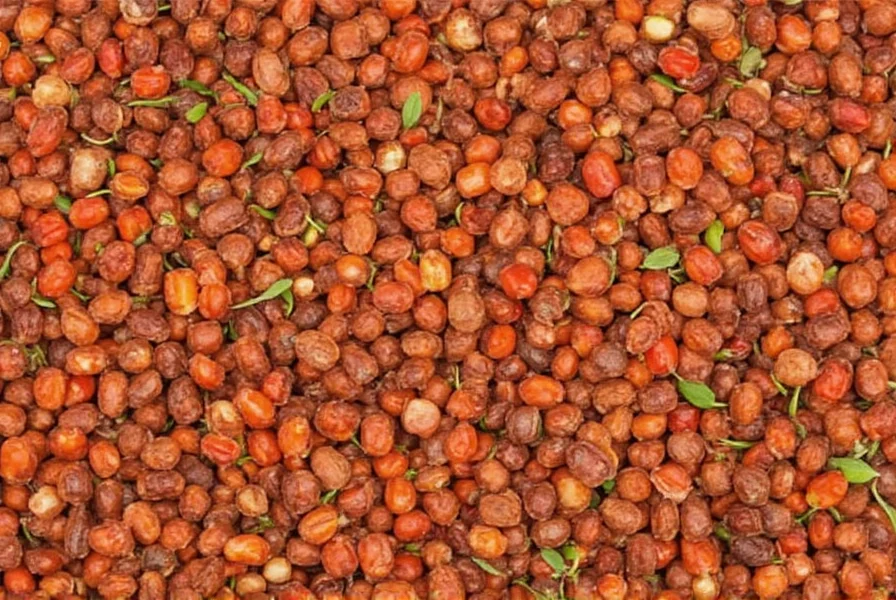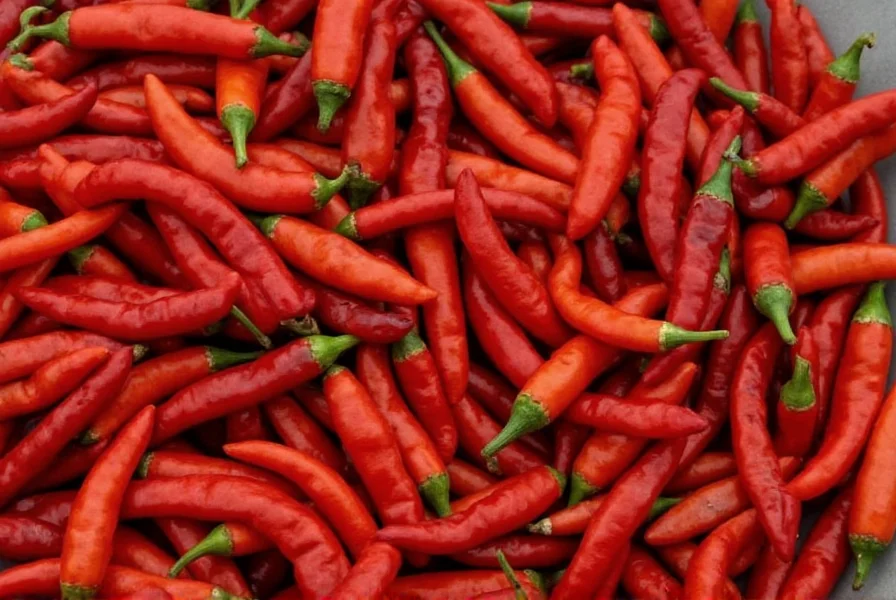Chipotle refers to a dried, smoked jalapeño pepper used in Mexican cuisine. The word comes from Nahuatl (Aztec) language, where "chilpoctli" means "smoked chili." It's known for its distinctive smoky, spicy flavor and is a staple in many dishes worldwide.
| Characteristic | Description |
|---|---|
| Flavor Profile | Smoky, spicy, slightly sweet |
| Heat Level (Scoville Scale) | 2,500–8,000 SHU (varies based on original jalapeño) |
| Form Available | Dried whole, powder, canned in adobo sauce |
| Best For | Stews, marinades, rubs, sauces |
The Origin Story: Where Did Chipotle Come From?
Chipotle has deep roots in Mexican cuisine. Traditionally used in dishes like mole and adobo, chipotle peppers were valued not just for their bold flavor but also for their preservation qualities — smoking was a natural way to extend shelf life before refrigeration.
Over time, this smoky spice gained popularity across the globe. Today, it's a staple in American Tex-Mex cuisine, appearing in everything from burgers to dressings. Its unique combination of heat and earthiness makes it a versatile ingredient in both home kitchens and professional restaurants.
Understanding the Chipotle Pepper: Flavor, Heat & Uses
Let's break down exactly what makes chipotle so special:
| Myth | Reality |
|---|---|
| Chipotle is always super spicy. | You can adjust the heat level by removing the seeds and veins. |
| All chipotle peppers are the same size and heat. | Like jalapeños, each pepper varies in intensity and size. |
| Only used in Mexican food. | Chipotle works great in Asian, Southern, and fusion dishes too! |
| It's easy to grow chipotle at home. | While jalapeños are easy to grow, smoking and drying them properly requires equipment. |

How to Use Chipotle in Your Kitchen
Cooking with chipotle opens up a world of flavor possibilities. Here are some creative ways to use it at home:
- Rubs: Mix chipotle powder with cumin, garlic, salt, and brown sugar for a killer barbecue rub.
- Sauces: Blend canned chipotles in adobo with mayo or sour cream to make a spicy dipping sauce.
- Marinades: Combine with lime juice, cilantro, and olive oil for a zesty marinade for chicken or shrimp.
- Chili & Stews: Add a few rehydrated chipotle pods to your next pot of chili for a smoky kick.
- Snack Seasoning: Sprinkle chipotle powder over roasted nuts or popcorn for a fiery twist.
Pro tip: start with a small amount and taste as you go — chipotle can be intense!
Buying Guide: Choosing the Best Chipotle Products
Dried Whole Chipotle Peppers
- Pros: Intense flavor, long shelf life
- Cons: Requires rehydration; may be tough to grind
- Best For: Making homemade sauces, stews, or soups
Chipotle Powder
- Pros: Easy to use, blends well into rubs and batters
- Cons: May lack freshness if stored too long
- Best For: Seasoning snacks, dry rubs, and quick marinades
Chipotle in Adobo Sauce (Canned)
- Pros: Ready-to-use, packed with flavor and moisture
- Cons: Can be too acidic for some dishes
- Best For: Tacos, sandwiches, creamy sauces, dips
Pro Tips for Cooking with Chipotle Peppers
Ready to add some serious flavor to your meals? Try these pro-level tips when working with chipotle:
- Rehydrate Dried Peppers: Soak in hot water or broth for 20 minutes before using to soften texture and intensify flavor.
- Remove Seeds for Milder Heat: If you love the smokiness but not the burn, remove the seeds and inner ribs before chopping.
- Blend with Sweet Elements: Balance the spiciness by pairing with honey, mango, or dark chocolate.
- Store Properly: Keep chipotle powder in an airtight container away from light and moisture. Canned versions last 6–9 months unopened.
- Add Toward the End: For more vibrant flavor, add chipotle toward the end of cooking rather than simmering it all day.
Health Benefits of Chipotle Peppers
Beyond flavor, chipotle peppers pack a punch when it comes to health benefits. Capsaicin — the compound responsible for chili heat — has been linked to:
- Increased Metabolism: Helps burn calories faster.
- Reduced Inflammation: Capsaicin may ease arthritis pain and inflammation.
- Heart Health: Studies suggest capsaicin improves circulation and lowers cholesterol.
- Pain Relief: Topical capsaicin creams are FDA-approved for treating nerve pain.
- Antioxidant Powerhouse: Rich in vitamin C, beta-carotene, and other antioxidants.

Frequently Asked Questions About Chipotle
What does "chipotle" literally mean?
"Chipotle" comes from the Nahuatl (Aztec) word "chilpoctli," which translates to "smoked chili" or "smoked pepper." It refers specifically to smoke-dried jalapeño peppers.
Is chipotle a type of pepper or a restaurant?
Chipotle originally refers to a type of smoke-dried jalapeño pepper. The restaurant chain "Chipotle Mexican Grill" took its name from this pepper, reflecting its Mexican culinary inspiration. When discussing food ingredients, "chipotle" refers to the pepper, not the restaurant.
How is chipotle pronounced?
Chipotle is pronounced "chi-POHT-lay" (with the emphasis on the second syllable). The "tl" at the end is pronounced like a "tlay" sound, not "tle."
What's the difference between chipotle and jalapeño?
Jalapeños are fresh green peppers, while chipotles are jalapeños that have been allowed to fully ripen (turning red), then smoke-dried. This drying process gives chipotles their distinctive smoky flavor and deeper, more complex taste profile compared to fresh jalapeños.
Can I substitute chipotle powder for chipotle in adobo sauce?
You can substitute, but with adjustments. As a general rule, 1-2 teaspoons of chipotle powder equals one chipotle pepper in adobo sauce. Since adobo sauce contains vinegar, tomatoes, and spices, you may need to add a small amount of vinegar or tomato paste to maintain the proper flavor balance.
Why are chipotle peppers smoked?
Smoking was originally a preservation method before refrigeration. The smoke-drying process not only extends the shelf life of ripe jalapeños but also develops their distinctive smoky flavor that's become so popular in cooking.
Are chipotle peppers always spicy?
While chipotle peppers do have heat (typically 2,500-8,000 on the Scoville scale), the level can be controlled. The seeds and white membranes contain most of the capsaicin (the compound that creates heat), so removing these parts will make chipotle peppers milder while retaining their smoky flavor.
Final Thoughts: Embracing the Smoky Heat
Now that you know what chipotle means, you're ready to dive headfirst into this smoky, flavorful world. Whether you're a seasoned chef or just starting to experiment in the kitchen, chipotle offers a perfect balance of heat and depth that can elevate any dish.
Remember, it's not just about the heat — it's about bringing complexity, warmth, and a little bit of Mexican soul into your everyday meals. So go ahead… spice things up!










 浙公网安备
33010002000092号
浙公网安备
33010002000092号 浙B2-20120091-4
浙B2-20120091-4